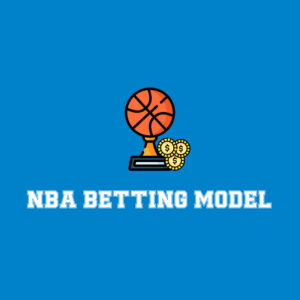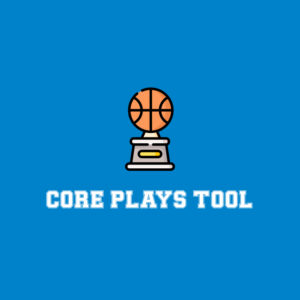
The Great Shedeur Sanders Watch of 2025 is over, and the dust has settled, so it’s time to evaluate this year’s draft class!
Immediate post-draft grades are very silly indeed. With no one having taken the field yet, even in practice, determining whether a draft class was successful or not is a fool’s endeavor. Fortunately, this is the internet, where there is a never-ending supply of fools ready to take on the challenge! Creating immediate post-draft grades is a mixture of considering a team’s needs, the consensus big board before the draft, your personal biases and big old dash of wild speculation. Put it all together, and you get the wisdom of crowds – which, uh, sometimes is more wise than others. Nevertheless, we persevere.


We have consolidated draft grades from the most prominent sports sources and football minds all into one place. Today, we’ll break down the consensus best, worst, and most polarizing draft classes of 2025. This is … the 2025 Draft Report Card Report.
The grading class for this season is as robust as ever, with 25 report cards from all corners of the Internet. We’ve tapped the following football minds to create our composite GPAs:
Mike Randle – FTN
Mel Kiper – ESPN
Mark Maske – Washington Post
Nate Davis – USA Today
Vinnie Iyer – Sporting News
Nate Tice/Charles McDonald – Yahoo! Sports
Chad Reuter – NFL
Kris Knox – Bleacher Report
Matt Verderame/Gilberto Manzano – Sports Illustrated
Eric Froton (AFC) and Kyle Dvorchak (NFC) – NBC Sports
Danny Kelly – The Ringer
Pete Prisco – CBS Sports
Chris Trapasso – CBS Sports
Ryan Dunleavy – New York Post
Evan Silva (AFC) (NFC) – Establish The Run
Luke Easterling – Athlon Sports
Staff – Pro Football Focus
Staff – Pro Football & Sports Network
Jarrett Bailey – Touchdown Wire
Andrew Erickson – FantasyPros
Thor Nystrom – FantasyLife
Rob Rang – FOX Sports
Ryan McCrystal – Sharp Football
Rob Maaddi – Associated Press
James Dator, Mark Schofield and Joseph Acosta – SB Nation
Each year, we take these evaluations and convert each letter grade to a numeric scale, from 0.0 for an F to 4.3 for an A+, then calculate the grade point average for each team. Typically, we then write about the five best, five worst and five most polarizing drafts per the wisdom of the crowds, though we have to do a few extra this year in the polarizing section for reasons which will become clear in a bit.
Last year’s report card report is available here on FTN, though you’ll have to take a trip on the Internet Archive’s Wayback Machine to track down older ones. They go all the way back to 2004.
Highest Draft Grades
1. Seattle Seahawks
GPA: 3.68
Highest Grade: A+ (Erickson)
Lowest Grade: B (three graders)
- Round 1, Pick 18: Grey Zabel, G, North Dakota State
- Round 2, Pick 35: Nick Emmanwori, S, South Carolina
- Round 2, Pick 50: Elijah Arroyo, TE, Miami
- Round 3, Pick 92: Jalen Milroe, QB, Alabama
- Round 5, Pick 142: Rylie Mills, DT, Notre Dame
- Round 5, Pick 166: Tory Horton, WR, Colorado State
- Round 5, Pick 175: Robbie Outzs, TE, Alabama
- Round 6, Pick 192: Bryce Cabeldue, G, Kansas
- Round 7, Pick 223: Damien Martinez, RB, Miami
- Round 7, Pick 234: Mason Richman, OT, Iowa
- Round 7, Pick 238: Ricky White III, WR, UNLV
The top two teams are separated by mere hundredths of a point, and Seattle just slides to the top spot thanks to every single grader giving them some flavor of B or higher, the only team this year to pull that off.
Grey Zabel going to the Seahawks was the most mocked first-round pick outside of the top five, and for good reason – Seattle needed help at three different positions on the offensive line, and Zabel could fill any one of those gaps. But that wasn’t the only thing Seattle got praised for. Nick Emmanwori is a super-athletic safety to slide right into Mike Macdonald’s scheme. Elijah Arroyo is a vertical threat the offense currently lacks and will serve as Noah Fant’s replacement. Several graders specifically called out the Jalen Milroe pick, with Erickson noting that he had a “sky-high ceiling,” both as a potential Sam Darnold replacement and as a Taysom Hill-esque playing piece for Klint Kubiak’s offense. Everyone figured the Seahawks came away with multiple starters, with Kiper pointing out potential third-day contributors in Martinez, Mills, White and Richman. With 11 picks, every grader found something they liked in Seattle’s class.
The closest thing to a negative in Seattle’s class was not doing even more work on the interior offensive line, which was most notably pointed out by Chris Knox – “fans don’t usually get excited when a team adds an interior lineman,” he wrote, but it was “surprising” that they didn’t do more to address a significant liability from 2024. Still, at a certain point, you’re picking nits.
2. New England Patriots
GPA: 3.66
Highest Grade: A+ (Knox and Kelly)
Lowest Grade: C+ (Nystrom)
- Round 1, Pick 4: Will Campbell, OT, LSU
- Round 2, Pick 38: TreVeyon Henderson, RB, Ohio State
- Round 3, Pick 69: Kyle Williams, WR, Washington State
- Round 3, Pick 96: Jared Wilson, C, Georgia
- Round 4, Pick 106: Craig Woodson, S, California
- Round 4, Pick 137: Joshua Farmer, DT, Florida State
- Round 5, Pick 146 Bradyn Swinson, EDGE, LSU
- Round 6, Pick 182: Andres Borregales, K, Miami
- Round 7, Pick 220: Marcus Bryant, OT, Missouri
- Round 7, Pick 251: Julian Ashby, LS, Vanderbilt
- Round 7, Pick 257: Kobee Minor, DB, Memphis
Missed it by that much. Both the Seahawks and Patriots were not only highly graded, but near universally so, with two of the five smallest standard deviations among graders. When it’s this close, one relative curmudgeon can be the difference, and the year’s harshest grader gave the Patriots their harshest grade, and so they slip to number two.

But first, the highlights. Danny Kelly noted that the Patriots nabbed six of the top 100 players on his big board, with Campbell (“easy-moving and savvy”), Henderson (“explosive playmaker”), Williams (“nifty route runner”), Wilson (“elite athleticism”, Farmer (“stout, powerful” and Swinson (“intriguing developmental traits”) all being noted as potential starters with a year or two. But it wasn’t just the raw talent, it was the way New England hit their biggest needs. Nate Davis said that the team absolutely had to have an offseason transfusion of offensive talent, and praised New England for using their first four picks on that side of the ball, with all four of them set to play regular snaps right off the bat. Drake Maye needed help, and Patriots gave it to them.
The criticism? Our harshest grader, Thor Nystrom, had issues. Will Campbell, he thinks, is a guard or a center rather than a tackle, making him a reach in the top five. He notes there is “zero precedent for standout NFL offensive tackles with shorter than 33-inch arms.” He also raised an issue with Kyle Williams’ mediocre measurables in Round 3, even though he believes he will start immediately. Still, a C+ is basically an average grade from Nystrom, so perhaps New England’s toughest critic was the AP’s Rob Maaddi, who dinged them for taking a second-round running back in Henderson on his way to giving them a B-.
3. New York Giants
GPA: 3.46
Highest Grade: A+ (three graders)
Lowest Grade: D- (Silva)
- Round 1, Pick 3: Abdul Carter, EDGE, Penn State
- Round 1, Pick 25: Jaxson Dart, QB, Mississippi
- Round 3, Pick 65: Darius Alexander, DT, Toledo
- Round 4, Pick 105: Cam Skattebo, RB, Arizona State
- Round 5, Pick 154: Marcus Mbow, OT, Purdue
- Round 7, Pick 219: Thomas Fidone, TE, Nebraska
- Round 7, Pick 246: Korie Black, CB, Oklahoma State
Is Jaxson Dart the Giants’ quarterback of the future? Our jury is still out on that, though most liked that the Giants took him late in the first round and grabbed Abdul Carter with the third pick instead. A lot of what determined whether a grader gave the Giants an A or a B was how optimistic they were about Dart’s prospects – and how much they dinged the Giants for giving up three picks to go get him.
Manzano wrote that Carter looks like a game-wrecker next to Brian Burns and Dexter Lawrence II, drawing comparisons to Micah Parsons and Von Miller. He was one of multiple voters to point out that Dart doesn’t need to start right away, and that he can develop under Brian Daboll while Russell Wilson takes a beating in 2025. And he loved the selection of Skattebo, a BackCAST binkie, in the fourth round. Maaske called the Dart trade one the Giants had to make, and said that preferring Dart to Shedeur Sanders was entirely justifiable. The fates of Daboll and GM Joe Schoen are tied to the quarterback in this draft; they were good to make sure they got the one they believed in most.

Silva, on the other hand, believes the Giants missed the target with Dart, calling him a “modest-armed prospect coming from a gimmicky college offense,” and betting that he won’t be the one to save Daboll and Schoen. Thus, Dart will be inherited by a new regime in 2026, forced to learn a new system under shot callers who didn’t draft him – a “disastrous situation” from an organization continuing to “circle the drain.” No one else was willing to quite so far out on a limb, but he wasn’t the only Dart doubter; that selection was why Bailey gave them a C- of his own. Most other Dart skeptics were willing to give the Giants a B, noting that getting Carter first took any sting out of using a couple mid-day picks to move up for a quarterback, even if it wasn’t their favorite.
4. Kansas City Chiefs
GPA: 3.40
Highest Grade: A+ (Esterling)
Lowest Grade: C- (Silva and Nystrom)
- Round 1, Pick 32: Josh Simmons, OT, Ohio State
- Round 2, Pick 63: Omarr Norman-Lott, DT, Tennessee
- Round 3, Pick 66: Asthon Gillotte, EDGE, Louisville
- Round 3, Pick 85: Nohl Williams, CB, California
- Round 4, Pick 133: Jalen Royals, WR, Utah State
- Round 5, Pick 156: Jeffery Bassa, LB, Oregon
- Round 7, Pick 228: Brashard Smith, RB, SMU
Flipping from the front to the back end of the draft order, the Chiefs drew near-universal praise for finding value both early and late, trading down in the first round and then finding multiple Day 3 contributors who went well after their spots on the consensus big board: Royals, Bassa and especially Smith.
Multiple graders gave the Chiefs credit for sliding down just one spot to take Josh Simmons, who could become Kansas City’s long-term answer at left tackle if he recovers well from the torn patella that ended his 2024 season. Easterling lauded the Chiefs for finding three instant-impact defenders on Day 2, with Williams as a perfect fit for Steve Spaguolo’s scheme and Norman-Lott and Gillotte ready to eat up significant snaps from the word go. Several graders highlight both Royals and Smith as sneaky valuable playmakers, both of whom went at least 50 spots later than they were expected to go. “This class will keep the Chiefs among the NFL‘s elite after a disappointing end to last season, and annoy everyone who is tired of seeing them go deep in the playoffs every year,” predicts Easterling.
Our two toughest graders once again chime in with concerns, however. Silva had to admit that the Chiefs hit a potential home run in Simmons, but thinks Norman-Lott is undersized, Gillotte is “not overwhelmingly athletic,” and criticized the Chiefs for trading a pick to climb up 10 slots to reach for Williams late in the third. Those Day 2 picks were also singled out by Nystrom, wondering why Norman-Lott couldn’t get more work at Tennessee if he was as good as everyone else claimed? Both graders liked the Day 3 picks, but said they weren’t enough to make up for a questionable Saturday.
5. Philadelphia Eagles
GPA: 3.38
Highest Grade: A (five graders)
Lowest Grade: B- (Bailey and Silva)
- Round 1, Pick 31: Jihaad Campbell, LB, Alabama
- Round 2, Pick 64: Andrew Mukuba, S, Texas
- Round 4, Pick 111: Ty Robinson, DT, Nebraska
- Round 5, Pick 145: Mac McWilliams, CB, UCF
- Round 5, Pick 161: Smael Mondon Jr, LB, Georgia
- Round 5, Pick 168: Drew Kendall, C, Boston College
- Round 6, Pick 181: Kyle McCord, QB, Syracuse
- Round 6, Pick 191: Myles Hinton, OT, Michigan
- Round 6, Pick 207: Cameron Williams, OT, Texas
- Round 6, Pick 208: Antwaun Powell-Ryland, EDGE, Virginia Tech
The Eagles were the other team besides Seattle to not get any grade in the C’s or D’s, though most graders were fine keeping them firmly planted in ‘B’ territory. Howie Roseman has garnered a reputation as one of the best drafters in recent years, and he had plenty more flowers thrown his way by our graders this week. “Roseman has done it again,” Kiper declared, and most of our panel agreed.
Per usual, the Eagles found an early-round talent who slipped through the cracks. This year, that was Jihaad Campbell, whose labrum injury turned him from a top-10 prospect to one the Eagles could grab at the back end of the first round. He’s an especially solid pick if Nakobe Dean’s knee injury is worse than expected. But it wasn’t a one-person class, either. Kiper singled out Andrew Mukuba as a replacement for the departed C.J. Gardner-Johnson on the back end, and multiple voters liked the depth Ty Robinson brings to the defensive line. The most intriguing prospect might be Cameron Williams though, with Kelly noting that he is a “massive human being with natural movement skills, so of course the Eagles got him.”
Maadi had to bust out the SpongeBob meme typing to perhaps take a veiled shot at Kiper, noting that “I’m not one of these people who act like the Eagles have some secret recipe during the draft and tweet ‘HoWiE dOeS iT aGaIn.’ You mean the guy who picks the best player available in the first two rounds has a high success rate? Incredible,” before admitting that the Eagles did in fact, have a fine draft. Others pointed out that the value the Eagles normally get tapered off after Campbell, with Mukuba, Kendall, Hinton and McWilliams going “too early” per the consensus big board, but it was hard to find much in the way of substantive criticism. HoWiE dOeS iT aGaIn.
Lowest Draft Grades
32. Cincinnati Bengals
GPA: 2.08
Highest Grade: B+ (Erickson)
Lowest Grade: D- (Verderame and Nystrom)
- Round 1, Pick 17: Shemar Stewart, EDGE, Texas A&M
- Round 2, Pick 49: Demetrius Knight Jr., LB, South Carolina
- Round 3, Pick 81: Dylan Fairchild, G, Georgia
- Round 4, Pick 119: Barrett Carter, LB, Clemson
- Round 5, Pick 153: Jalen Rivers, OT, Miami
- Round 6, Pick 193: Tahj Brooks, RB, Texas Tech
Well, at least they used their picks on defense. The graders were puzzled by the Bengals’ strategy, or lack thereof in this draft, criticizing them for reaching too often and still not addressing their secondary or much of their offensive line.
Verderame was their harshest critic by far, blasting them for not taking a corner or safety at any point. He pointed out that Knight is a 25-year-old prospect who played six years across three programs, and wasn’t a second-round value. “The values were largely poor,” he wrote, “and the talents don’t have high ceilings.” He didn’t even mention Stewart, a massive boom-or-bust prospect with just 4.5 career sacks to his name; a pick of pure projection. Add in double-dipping on off-ball linebackers in Knight and Carter, and most of our graders found little here that will help early in 2025 for a team that still thinks of itself as a contender.
Were there any positives? Well, a couple writers pointed out that if Stewart does develop, he’s a potential Trey Hendrickson replacement, with Hendrickson possibly on his way out. Rang pointed out several Bengals picks who fit that mode, with Knight and Carter being potential replacements for Pratt and Wilson. Not filling holes right now, but filling holes for 2026, in other words.
31. Miami Dolphins
GPA: 2.18
Highest Grade: A (Erickson)
Lowest Grade: F (Randle)
- Round 1, Pick 13: Kenneth Grant, DT, Michigan
- Round 2, Pick 37: Jonah Savaiinaea, G, Arizona
- Round 5, Pick 143: Jordan Phillips, DT, Maryland
- Round 5, Pick 150: Jason Marshall, CB, Florida
- Round 5, Pick 155: Dante Trader Jr., S, Maryland
- Round 6, Pick 179: Ollie Gordon II, RB, Oklahoma State
- Round 7, Pick 231: Quinn Ewers, QB, Texas
- Round 7, Pick 253: Zeek Biggers, DT, Georgia Tech

One of two teams to receive both an A and F in our pool, the Dolphins were by far the less controversial one. With just two picks in the first five rounds, Miami had to nail their first two picks, and the general consensus was a swing and a miss.
While our own Mike Randle was the harshest on the Dolphins, five different graders had Miami multiple standard deviations below their median grade, with McCrystal, Davis, Rang and Bailey joining in to slam Miami for their picks. Trading up for Savaiinaea, a tackle who will shift inside to guard in the pros, was criticized multiple times – he was 55th on the consensus big board, and yet Miami traded from 48 to 37 to get him. And at least Savaiinaea is likely to start off the bat. McCrystal blasts teams for taking nose tackles in the first round, noting that Grant offers “almost nothing as a pass rusher,” and a run-clogging tackle isn’t the most thrilling use of first-round draft capital. “It would be a shock if this class produced more than two starters, and that’s a problem for a team that needed a lot more,” McCrystal writes. Davis notes that, while the trenches were positions of need, both Grant and Savaiinaea were reaches and there were higher-rated prospects at both positions on the board when Miami picked them.
We’ll cover the positive takes on Miami’s draft class in the Most Polarizing section, because there were a few! Just not nearly enough to drown out the nay-sayers.
30. New Orleans Saints
GPA: 2.32
Highest Grade: A- (Dunleavy)
Lowest Grade: D- (Bailey)
- Round 1, Pick 9: Kelvin Banks Jr., OT, Texas
- Round 2, Pick 40: Tyler Shough, QB, Louisville
- Round 3, Pick 71: Vernon Broughton, DT, Texas
- Round 3, Pick 93: Jonas Sanker, S, Virginia
- Round 4, Pick 112: Danny Stutsman, LB, Oklahoma
- Round 4, Pick 131: Quincy Ripley, CB, Louisville
- Round 6, Pick 184: Devin Neal, RB, Kansas
- Round 7, Pick 248: Moliki Matavao, TE, UCLA
- Round 7, Pick 254: Fadil Diggs, EDGE, Syracuse
Welcome to the start of the Shedeur Dialogue, as most of the vitriol directed at this class is aimed at Tyler Shough. Shough, the third quarterback off the board, started his college career in 2018 backing up Justin Herbert. He has just one year as a healthy, full-time starter and, most importantly of all, isn’t the son of Deion Sanders. If this mildly perturbs you, you might give the Saints a B. There are several voters out there who were more than mildly perturbed.

Erickson noted that the track record of second-round quarterbacks hitting is almost nonexistent, and that the Saints should have “just rolled into the season with Spencer Rattler in a full rebuild, instead of messing around” with Shough, also noting that hey, why not just take Sanders? Bailey noted that taking Shough and not finding any value picks meant that this was “a waste of three days for a team that left with less excitement than they came in with, which is certainly an accomplishment in its own right.” Knox at least pointed out Shough’s fit is solid in Kellen Moore’s offense before wondering if taking him over Sanders or Jalen Milroe was a massive mistake. He then turned around and blasted the Banks selection as one in a long line of Saints failures drafting linemen up front – Banks isn’t “necessarily a tailor-made left tackle despite playing the position in college,” and looks more like the next in the Trevor Penning–Taliese Fuaga pipeline.
Dunleavy, though, suggested that the Saints may have won Rounds 3 and 4 with Broughton, Sanker, Stutsman and Ripley, and said that Shough was ready to play if Carr is out for the season – a smoother transition than a developmental player like Milroe. That’s about all you get for positive praise – the next most positive thing written was by Maske who called the Banks and Shough picks “sound.” Feel the excitement.
29. Minnesota Vikings
GPA: 2.33
Highest Grade: A (Trapasso)
Lowest Grade: D (Iyer and Nystrom)
- Round 1, Pick 24: Donovan Jackson, G, Ohio State
- Round 3, Pick 102: Tai Felton, WR, Maryland
- Round 5, Pick 139: Tyrion Ingram-Dawkins, DT, Georgia
- Round 6, Pick 201: Kobe King, LB, Penn State
- Round 6, Pick 202: Gavin Bartholomew, TE, Pittsburgh
The Vikings came in with just four picks, the least draft capital of any team in the league. They left with just five players, only one of whom was drafted in the top 100. A great number of our voters think that this represents a failing on their parts, dinging the 2025 draft for last year’s draft moves.
Iyer called this draft “underwhelming,” noting that no one other than Jackson works to keep them as a playoff team in the middle of a quarterback transition. Maske noted that their most impactful move of draft weekend was trading for Sam Howell and settling the backup quarterback position. Iyer, at least, also criticized the selection, calling the pick “too need-based” rather than just taking the best player on the board, and noted that the Vikings should have addressed needs in their secondary at some point. There was a universal theme that the Vikings really didn’t come out of this weekend with enough talent.
Trapasso, on the other hand, said that Kwasi Adofo-Mensah “knocked this selection process out of the park,” getting the maximum leverage value out of his limited resources, with a pro-ready guard in the first, a speedy wideout in the third, and a couple chess pieces for Brian Flores late. “Needs met, and they were aligned with prospects snagged at the right values.” Manzano said that J.J. McCarthy was set up for success with a guard and a wideout as Minnesota’s first two picks. Neither gave Minnesota a penalty for not having picks coming into the weekend, and only evaluated how you use them. Just how much to dock Minnesota for being in their draft capital situation is a fair question.
28. Detroit Lions
GPA: 2.33
Highest Grade: B+ (SBNation and PFN)
Lowest Grade: F (Nystrom)
- Round 1, Pick 28: Tyleik Williams, DT, Ohio State
- Round 2, Pick 57: Tate Ratledge, G, Georgia
- Round 3, Pick 70: Isaac TeSlaa, WR, Arkansas
- Round 5, Pick 171: Miles Frazier, G, LSU
- Round 6, Pick 196: Ahmed Hassanein, EDGE, Boise State
- Round 7, Pick 230: Dan Jackson, S, Georgia
- Round 7, Pick 244: Dominic Lovett, WR, Georgia
The Lions’ biggest need during this draft was edge rusher. Their best option opposite Aidan Hutchinson being eight-year veteran Marcus Davenport, who has yet to put together a complete season. When round after round went without the Lions finding someone to add pressure, graders got more and more incredulous – sure, most of the other picks were fine, but where on earth was the pass rusher?
Nystrom began his analysis stating “GM Brad Holmes has gotten the last laugh in the past for his draft classes, which have often been criticized in the moment.” He then proceeded to criticize Holmes in the moment, calling the Tyleik Williams pick the most shocking pick of the first round, especially with players such as Donovan Ezeiruaku, Nic Scourton and Oluwafemi Oladejo still on the board. He called Tate Ratledge a “contextually defensible” pick, but said that TeSlaa went a full round too early and that only Lovett was a justifiable draft pick on Day 3. No one else was quite as detailed in their criticism as Nystrom, but he voiced the general consensus – Ratledge was understandable, the rest of the draft was not.
Contrary voices exist! The SBNation crew called this an “extremely Dan Campbell draft,” sticking with hard-nosed, no-nonsense players, with Williams and Ratledge anchoring the lines on both side of the ball. PFN gave each Lions pick individually at least a B-, noting that Williams was a player with three-down upside in the Alim McNeil mold, and that Ratledge should slide right in for Kevin Zeitler. This praise is drowned out by the wave of demanding an edge rusher somewhere in the first 195 picks, but it is there.
Most Polarizing
1. Miami Dolphins
Standard Deviation: 0.91
Highest Grade: A (Erickson)
Lowest Grade: F (Randle)
- Round 1, Pick 13: Kenneth Grant, DT, Michigan
- Round 2, Pick 37: Jonah Savaiinaea, G, Arizona
- Round 5, Pick 143: Jordan Phillips, DT, Maryland
- Round 5, Pick 150: Jason Marshall, CB, Florida
- Round 5, Pick 155: Dante Trader Jr., S, Maryland
- Round 6, Pick 179: Ollie Gordon II, RB, Oklahoma State
- Round 7, Pick 231: Quinn Ewers, QB, Texas
- Round 7, Pick 253: Zeek Biggers, DT, Georgia Tech
Here’s where we have to admit something – our finger is a little on the scale here when it comes to the most polarizing picks. Only four F’s were given out by our 25 voters, and two of them came from Mike Randle of FTN. Randle also had the lowest correlation between his own picks and the general consensus. Take him out, and the Dolphins jump from the most polarizing to the fourth-most polarizing. We were far from the only ones to criticize the Dolphins’ draft, but we were the only one to hand them an F.
But we already talked about why people didn’t like the Dolphins draft, and for a class to be polarizing, there must be defenders. The biggest Dolphin-backer was Erickson, who pointed out that the defensive and offensive lines where Miami’s biggest needs entering in, and they came out of the first two rounds with who he considered to be the top options remaining at both positions. He specifically gave the Dolphins credit for moving up to get Savaiinaea, saying that the position was starting to dry up quickly. No guard was selected between Savaiinaea at 37 and Tate Ratledge at 57, and most big boards had a significant gap between Savaiinaea and the next rung of interior linemen. With their first two picks filling immediate needs, a handful of voters did tip their caps to Miami, though not enough to drown out the larger crowd of people questioning the value of both of their premium picks.
2. Las Vegas Raiders
SD: 0.88
Highest Grade: A+ (Knox)
Lowest Grade: F (Randle)
- Round 1, Pick 6: Ashton Jeanty, RB, Boise State
- Round 2, Pick 58: Jack Bech, WR, TCU
- Round 3, Pick 68: Darien Porter, CB, Iowa State
- Round 3, Pick 98: Caleb Rodgers, OL, Texas Tech
- Round 3, Pick 99: Charles Grant, OT, William & Mary
- Round 4, Pick 108: Dont’e Thornton Jr., WR, Tennessee
- Round 4, Pick 135: Tonka Hemingway, DT, South Carolina
- Round 6, Pick 180: JJ Pegues, DT, Mississippi
- Round 6, Pick 213: Tommy Mellott, WR, Montana State
- Round 6, Pick 215: Cam Miller, QB, North Dakota State
- Round 7, Pick 222: Cody Lindenberg, LB, Minnesota

The Dolphins’ polarizing grade might have been inflated by our grades. The Raiders? That’s entirely on us. Without our grades, the Raiders slip into the top three classes of the year, sitting at a 3.5 GPA. Randle’s F singlehandedly knocks them down to 3.36, and stands out like a flashing beacon amidst a sea of A’s.
Randle dings the Raiders for adding key fantasy pieces while not addressing their main needs – he gave them a B+ as a fantasy-specific grade alongside his F as an overall grade. Taking Ashton Jeanty sixth overall is “a very 1980s move” in a division where each opponent has a great head coach, franchise quarterback and strong defense, and doubling down with another skill position player in Round 2 brings questions, too. “Unless the two Round 3 offensive linemen exceed expectations, I don’t see how the Raiders improved as a team,” Randle writes. No one else was quite that harsh, though PFN noted that this looked like a draft that puts the finishing touches on a playoff team, rather than one for a team that needs to build. “The Raiders look like a team that eschewed its vegetables in favor of desert, leaving them with some flashier pieces but a lot of holes.”
This was, by far, the minority opinion. Twelve different graders had the Raiders at least a full standard deviation above their average grade. Maadi gave Las Vegas one of his three As, calling Jeanty the best player at his position, noting Bech’s high ceiling, and saying that Rodgers and Grant as consecutive picks was a Day 2 highlight. Knox gave a rare A+. Jeanty should “immediately take pressure off veteran quarterback Geno Smith,” and “feast in Chip Kelly’s running back-friendly scheme.” He also praised them for trading down multiple times at the beginning of Round 2 in a draft that was supposed to deeper in the middle rounds. “This draft was all about finding the pieces needed to field a Pete Carroll team — one with a dominant ground game, strong offensive line and physical defense. In that regard, this class looks terrific,” he concluded. Except for some grousing about not finding a better developmental player behind Geno Smith, that was closer to the broad consensus.
3. New York Giants
SD: 0.82
Highest Grade: A+ (three graders)
Lowest Grade: D- (Silva)
- Round 1, Pick 3: Abdul Carter, EDGE, Penn State
- Round 1, Pick 25: Jaxson Dart, QB, Mississippi
- Round 3, Pick 65: Darius Alexander, DT, Toledo
- Round 4, Pick 105: Cam Skattebo, RB, Arizona State
- Round 5, Pick 154: Marcus Mbow, OT, Purdue
- Round 7, Pick 219: Thomas Fidone, TE, Nebraska
- Round 7, Pick 246: Korie Black, CB, Oklahoma State
We covered “as the Dart flies” back up with the best classes of the year. Without FTN’s grades, this is the most polarizing draft of the class, as is often the case with situations where teams trade up for first-round quarterbacks.
4. Los Angeles Chargers
SD: 0.81
Highest Grade: A (Easterling)
Lowest Grade: F (Nystrom)
- Round 1, Pick 22: Omarion Hampton, RB, North Carolina
- Round 2, Pick 55: Tre Harris, WR, Mississippi
- Round 3, Pick 86: Jamaree Caldwell, DT, Oregon
- Round 4, Pick 125: Kyle Kennard, EDGE, South Carolina
- Round 5, Pick 158: KeAndre Lambert-Smith, WR, Auburn
- Round 5, Pick 165: Oronde Gadsden II, TE, Syracuse
- Round 6, Pick 199: Brandon Taylor, G, Pittsburgh
The other team with both an A and an F, as Los Angeles went for sizzle over steak with their first couple picks.

While most graders could support an all-world talent like Jeanty in the first round, it is harder to justify Hampton as a first-round pick in what is supposed to be one of the deepest running back classes in recent memory. Nystrom criticized the pick most harshly, noting that Hampton “is a hard-charging north/south runner who does not mess around behind the line. The fact that HC Jim Harbaugh fell in love with him this spring is the least surprising thing that has ever happened.” Nystrom also pointed out that the Chargers had significant needs among their trenches, and didn’t address that until Day 3. He also thought the specific players involved, Caldwell and Kennard, were each drafted significantly too early. The lack of linemen in favor of firepower was brought up multiple times by the other graders who were sour on the Chargers’ class, with Tice, Kelly, Davis, Maaddi and the PFN staff all knocking Los Angeles at least one standard deviation below their average.
There were defenders, however! Easterling admitted that the line was an issue, but getting more weapons for Justin Herbert was also a priority, and that it’s not fair to ding the Chargers for addressing the latter rather than the former with the first two picks. He also is much, much higher on Caldwell and Kennard than Nystrom was, calling the former a perfect anchor and the latter a bargain in the fourth round. Silva agreed, calling Kennard a robbery in the fourth round, and noting that Caldwell provides more sack production than you think. He also noted that Hampton was a massive upgrade over Najee Harris in an offense that wants to run the ball early and often, and like Lambert-Smith as a deep threat for an offense that desperately needed one. A “rock-solid haul with some potential for the spectacular,” in other words.
5. Atlanta Falcons
SD: 0.79
Highest Grade: A- (three graders)
Lowest Grade: D- (Silva and Dvorchak)
- Round 1, Pick 15: Jalon Walker, EDGE, Georgia
- Round 1, Pick 26: James Pearce Jr., EDGE, Tennessee
- Round 3, Pick 96: Xavier Watts, S, Notre Dame
- Round 4, Pick 118: Billy Bowman Jr, S, Oklahoma
- Round 7, Pick 218: Jack Nelson, OT, Wisconsin
The Falcons haven’t been able to generate any pressure in years – their 169 sacks since 2019 are nearly 30 behind the next-worst team. They certainly looked to address that in the first round with two pass rushers, but paid a pretty price to do it, sending away their 2026 first-rounder to jump back in to take James Pearce. Filling the need, or wasting the capital? That’s catnip for some wide-ranging draft grades, and so we find ourselves here.
The defense of the defense was led by the PFN staff, saying that it was good to see Atlanta investing in defense after years of prioritizing the “sexy offensive positions.” Walker and Pearce are a “pair of SEC game-wreckers,” both of whom should be in the mix early. They were actually higher on the mid-round grades, giving the Watts pick an A+ and the Bowman pick an A- as the Falcons revamped their secondary. There was a little concern over Walker maybe being a positionless player, and doubling up on safety raises questions as to where Atlanta will use them, but graders who focused on the players Atlanta brought in generally liked the draft.
Not valuing the value, however, were the trio of Dvorchak, Masske and McDonald, all of whom blasted the first-round decisions. Dvorchak noted that “Atlanta sent their 2026 first to move back into the first round. The team is set to start a quarterback with three career starts to his name and their head coach has one winning season in four tries. The amount of risk Atlanta took on with this trade is absurd.” Masske added that this draft was filled with pass-rush talent, making trading up for a specific one even more questionable. McDonald called the trade “asinine,” noting that the Falcons are likely to be drafting fairly high next year with the pick they gave up. None had a problem with the players or the position of need, but the price was just too high for some.
6. Cleveland Browns
SD: 0.79
Highest Grade: A+ (Kiper and Randle)
Lowest Grade: D (Silva)
- Round 1, Pick 5: Mason Graham, DT, Michigan
- Round 2, Pick 33: Carson Schwesinger, LB, UCLA
- Round 2, Pick 36: Quinson Judkins, RB, Ohio State
- Round 3, Pick 67: Harold Fanning Jr., Bowling Green
- Round 3, Pick 94: Dillon Gabriel, QB, Oregon
- Round 4, Pick 126: Dylan Sampson, RB, Tennessee
- Round 5, Pick 144: Shedeur Sanders, QB, Colorado
You didn’t think we were getting out of here without talking about the Browns, did you?

There are two things draft graders love: picking up oodles of draft capital and finding massive steals from players plummeting on their big boards. The Browns pulled off both in the 2025 draft, collecting a king’s ransom from the Jaguars in the first round while still picking up the top interior lineman in the draft in Mason Graham. They then took the biggest steal of the draft, as Shedeur Sanders was 22nd on the consensus big board and yet fell to 144. I think they might have mentioned that once or twice on the broadcast. They also picked up a couple other players, but I’m not sure anyone else noticed.
If it were that simple, people would love the Browns’ class. And to be fair, the majority of voters did at least like it. To no one’s surprise, Kiper is the biggest supporter of this class. After spending all weekend ranting and raving at the league for not drafting Sanders it’s no shock he handed them an A+. That’s a full 2.41 standard deviations above his average grade, making it the single highest positive outlier in our entire sample. Sure, Randle also gave the Browns an A+, but he used the full gamut of grades in his evaluation. Kiper is a notoriously tight grader, with 22 teams falling into the “B” range, but he busted out the rare A+ for the Browns. This is the first A+ he’s ever given in our studies, which go back to 2004. He is more out on a limb with this class than he has been for any other class in two decades. It’s not just Sanders and the trade – he likes Graham, he likes Schwesinger, he likes Judkins and Sampson – but it’s the trade and the Sanders pick that drive the A+.
No one else is quite as far out over their skis as Kiper is, but plenty of graders loved the combo of the trade down and finally ending Sanders’ slide. Three main exceptions push back against it, though. Silva refused to give the Browns credit for an “owner-driven move” of drafting Sanders, and instead blasted them for using three picks on an off-ball linebacker and two running backs. He also said Sanders has a “backup-caliber game”, sentiments backed up by Rang. Rang said that the Browns drafted two quarterbacks, neither of whom were realistic options to start in the season opener. He also disliked passing up the opportunity to take a blue-chip player like Travis Hunter or Abdul Carter in favor of the not “special” Graham. PFF also had some questions about using multiple picks on the interior of the defense, which was already the Browns’ projected strength, as well as questioning the value in drafting Sanders when they had already taken Gabriel.
The Browns were also the only team to earn an “incomplete” grade, with Davis saying that “here’s no legitimate way to know what to make of this until the bigger picture comes into focus – at least a year from now.” This, apparently, as opposed to the other 31 teams, who are all rock-solid in focus at the moment. “Think this assessment is a copout?” he asks. Yes. Yes I do.
7. San Francisco 49ers
SD: 0.78
Highest Grade: A- (Dunleavy and SBNation)
Lowest Grade: D (Manzano and PFF)
- Round 1, Pick 11: Mykel Williams, EDGE, Georgia
- Round 2, Pick 43: Alfred Collins, DT, Texas
- Round 3, Pick 75: Nick Martin, LB, Oklahoma State
- Round 3, Pick 100: Upton Stout, CB, Western Kentucky
- Round 4, Pick 113: CJ West, DT, Indiana
- Round 4, Pick 138: Jordan Watkins, WR, Mississippi
- Round 4, Pick 147: Jordan James, RB, Oregon
- Round 5, Pick 160: Marques Sigle, S, Kansas State
- Round 7, Pick 227: Kurtis Rourke, QB, Indiana
- Round 7, Pick 249: Connor Colby, G, Iowa
- Round 7, Pick 252: Junior Bergen, WR, Montana
The 49ers entered the draft with two pressing needs, according to the general consensus – replacing the defensive front that lost so much talent this offseason, and bolstering the offensive line. The 49ers did exactly one of those things, locking Kyle Shanahan in a broom closet for 130-odd picks while Robert Saleh got to remake the 49ers’ defense. They do not seem to think their offensive line is a problem, and some graders had a problem with that.
The biggest negative outlier this year goes to PFF’s D for San Francisco, a full 2.9 standard deviations below their average. PFF was the third-easiest grader this year, so for them to give a team a D, you know they strongly disapproved. They’re concerned about Collins’ pass-rush and Martin and Stout’s size, and not overly enthused about any pick. Sports Illustrated was blunter, saying that Williams didn’t have the upside some of the later pass rushers had, and that they missed an opportunity to replace the departed Aaron Banks. “They lost several starters in free agency, but the team might not have drafted the right players to immediately fill those voids,” Manzano writes. That echoed the general consensus that the 49ers, as they so often have under John Lynch, reached multiple times compared to the consensus big board, locking in on their targets and drafting them rather than seeing if they could pick up more value.
But while the takes were more negative than positive, San Francisco’s class does have it’s defenders. Dunleavy liked the focus San Francisco had, throwing all their resources into making the defense a strength, while SBNation said that they “love this class” – “The 49ers saw their run defense get blasted off the face of the earth in 2024 and said, “never again.” Williams and Collins should be bonafide stars against the run, and hey, maybe Connor Colby pushes for starting time and fixes that hole at guard.

Grading the Graders
The easiest grader of 2024? To no surprise, it’s the NFL’s own official grades, as everyone’s above average in the warm arms of the league. An average GPA of 3.44, with no one getting below a B-. That translates to somewhere between a B+ and an A-, while the average in the entire sample was a straight B. Line up to get Professor Chad Reuter to hand out your grades while you can.
The harshest grader was Thor Nystrom, with an average GPA of just 2.32 and a 1.22 standard deviation. This gets into different philosophies of grading. You can choose to grade teams compared to some ideal standard – whether they filled their needs, whether they got good value, and so on and so forth. In that case, you might well give most teams a B, as many of our graders did – you’re comparing them to some sort of standard for each grade and seeing how well they matched up. This is a pretty traditional way to do this coming from a teaching background; you make your rubric and see where teams fall on the standards you set out in advance.
But you don’t have to do that – you can grade them against one another, so the best teams in a year get A+’s and the worst teams get D’s and F’s. Forget what an idealized draft looks like – this is a sport, and we have to have a winner and a loser. This is grading on a curve, scaling teams performances to run the full gamut of letters available. Our three highest standard deviations – Nystrom, Mike Randle and Evan Silva – all followed that strategy. What, are they going to let all these D’s and F’s go to waste?
Reuter had the second-lowest standard deviation at 0.42, happy to give 18 teams an A- or B+. That was only topped by Rob Maaddi at the Associated Press at 0.41, giving 20 teams a B or B+. He did, at least, dip all the way down to C+ once, docking the Saints for their Shough shenanigans. See him after class.
Kris Knox over at Bleacher Report was the closest to consensus, with a 0.77 correlation between his grades and the sample’s average. He was only off by a full letter grade on two teams, being unusually hard on the Saints (D+) and Steelers (C).
The furthest from consensus? That is our own Mike Randle, with just a 0.39 correlation between his grades and the sample’s average. His F for the Raiders (average grade: 3.36) is the largest outlier, but he was also two letter grades apart for Miami (F) and Jacksonville (D), and one letter grade off for Cleveland (A+), Houston (A), Denver (A) and Pittsburgh (A+). At least we’re sure we’re not copying off of anyone else’s paper.















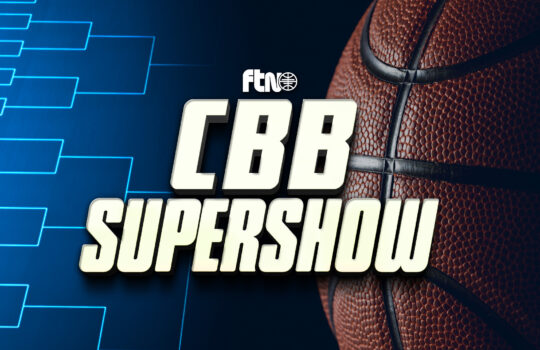











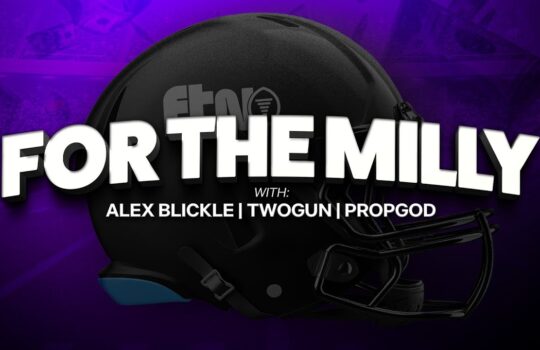










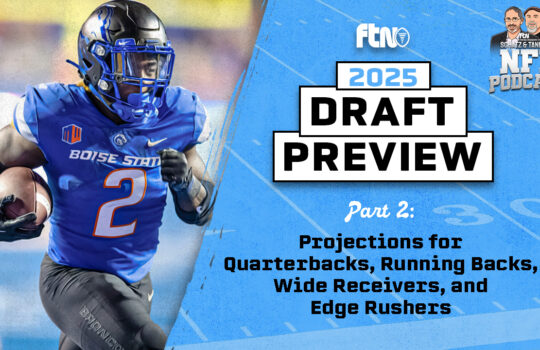

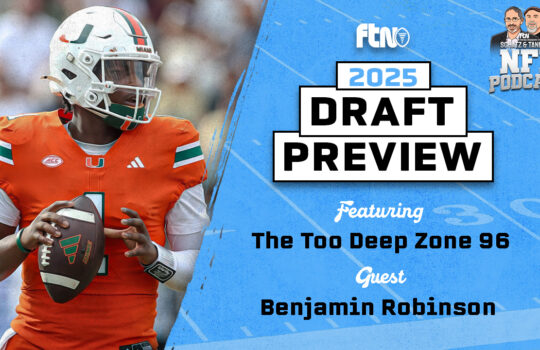
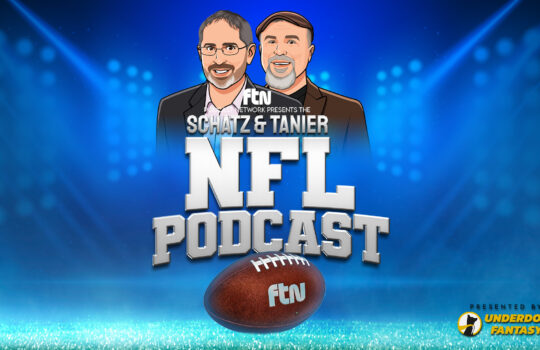






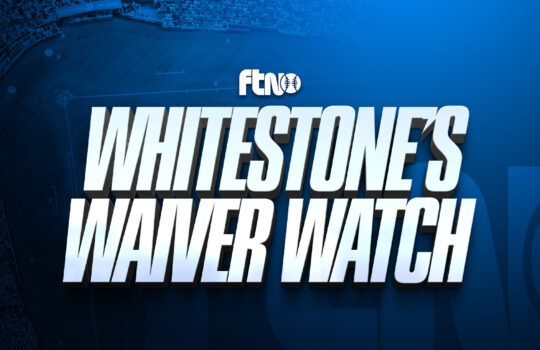

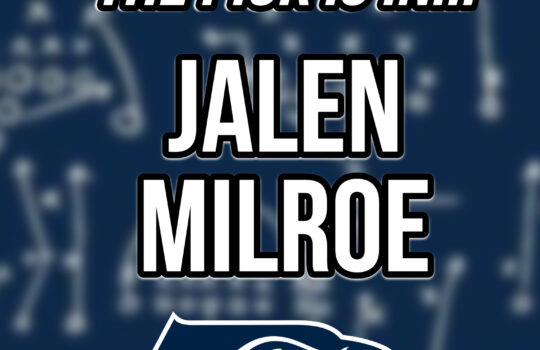

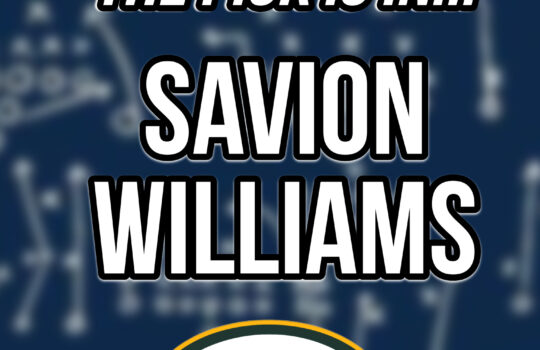
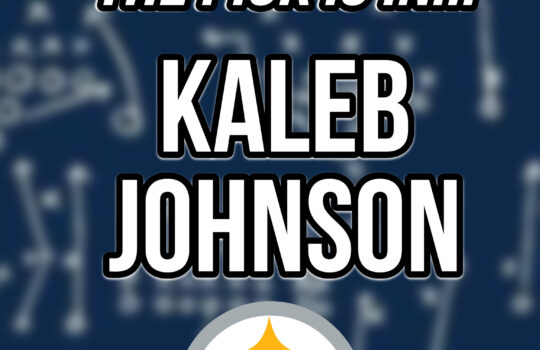
 New York Jets
New York Jets  New England Patriots
New England Patriots 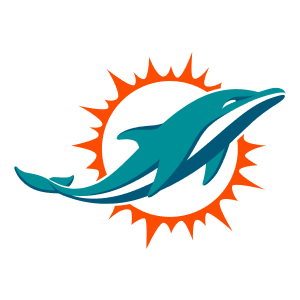 Miami Dolphins
Miami Dolphins  Buffalo Bills
Buffalo Bills  Pittsburgh Steelers
Pittsburgh Steelers  Cleveland Browns
Cleveland Browns  Cincinnati Bengals
Cincinnati Bengals 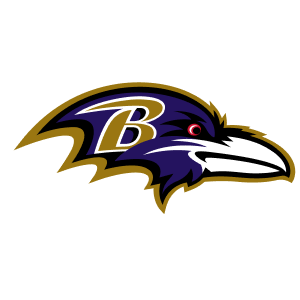 Baltimore Ravens
Baltimore Ravens 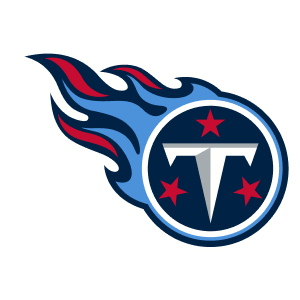 Tennessee Titans
Tennessee Titans  Jacksonville Jaguars
Jacksonville Jaguars  Indianapolis Colts
Indianapolis Colts  Houston Texans
Houston Texans  Las Vegas Raiders
Las Vegas Raiders 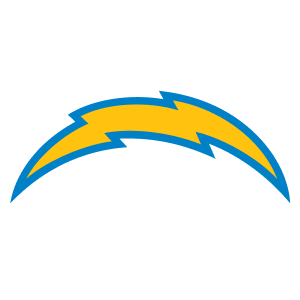 Los Angeles Chargers
Los Angeles Chargers  Kansas City Chiefs
Kansas City Chiefs 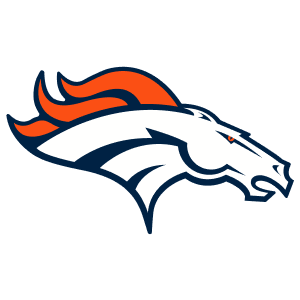 Denver Broncos
Denver Broncos  Washington Commanders
Washington Commanders  Philadelphia Eagles
Philadelphia Eagles 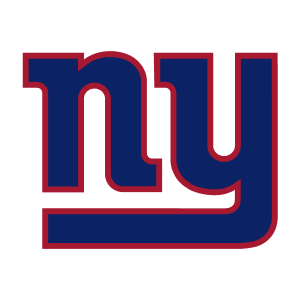 New York Giants
New York Giants  Dallas Cowboys
Dallas Cowboys 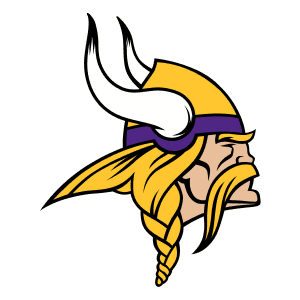 Minnesota Vikings
Minnesota Vikings  Green Bay Packers
Green Bay Packers 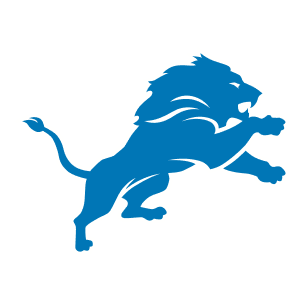 Detroit Lions
Detroit Lions 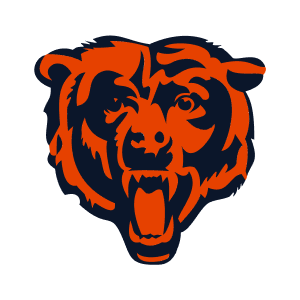 Chicago Bears
Chicago Bears 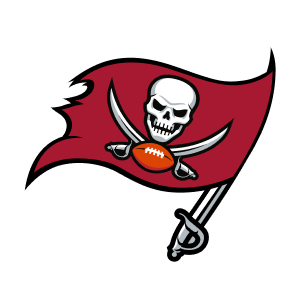 Tampa Bay Buccaneers
Tampa Bay Buccaneers  New Orleans Saints
New Orleans Saints 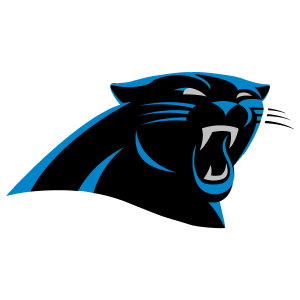 Carolina Panthers
Carolina Panthers 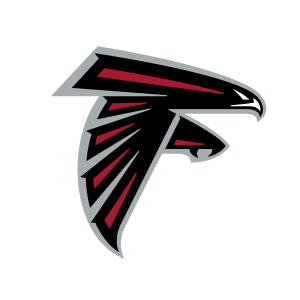 Atlanta Falcons
Atlanta Falcons 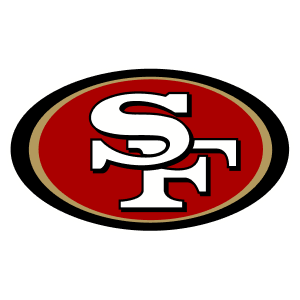 San Francisco 49ers
San Francisco 49ers  Seattle Seahawks
Seattle Seahawks  Los Angeles Rams
Los Angeles Rams 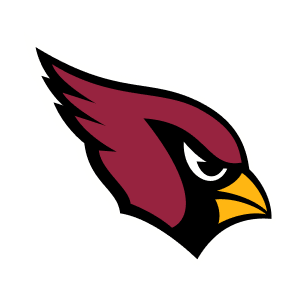 Arizona Cardinals
Arizona Cardinals 
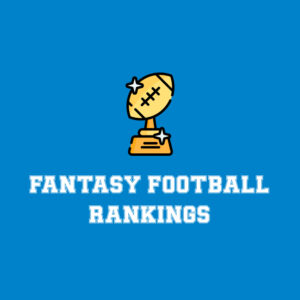
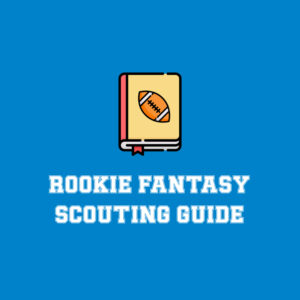

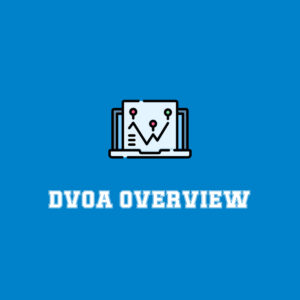
 Boston Celtics
Boston Celtics  Brooklyn Nets
Brooklyn Nets 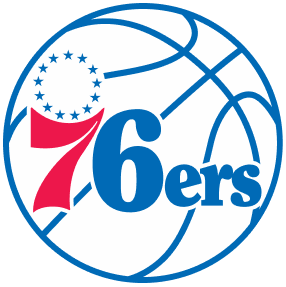 Philadelphia 76ers
Philadelphia 76ers  New York Knicks
New York Knicks  Toronto Raptors
Toronto Raptors  Chicago Bulls
Chicago Bulls  Detroit Pistons
Detroit Pistons  Milwaukee Bucks
Milwaukee Bucks  Cleveland Cavaliers
Cleveland Cavaliers  Indiana Pacers
Indiana Pacers  Orlando Magic
Orlando Magic 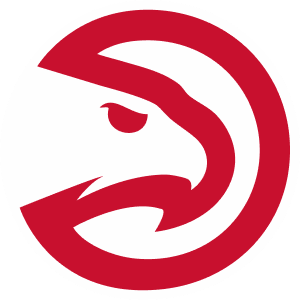 Atlanta Hawks
Atlanta Hawks  Charlotte Hornets
Charlotte Hornets  Miami Heat
Miami Heat  Washington Wizards
Washington Wizards  Denver Nuggets
Denver Nuggets 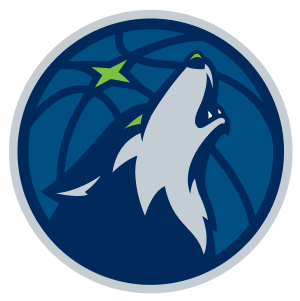 Minnesota Timberwolves
Minnesota Timberwolves  Oklahoma City Thunder
Oklahoma City Thunder  Portland Trail Blazers
Portland Trail Blazers  Utah Jazz
Utah Jazz  LA Clippers
LA Clippers  Golden State Warriors
Golden State Warriors  Los Angeles Lakers
Los Angeles Lakers  Phoenix Suns
Phoenix Suns  Sacramento Kings
Sacramento Kings  Dallas Mavericks
Dallas Mavericks  Houston Rockets
Houston Rockets  Memphis Grizzlies
Memphis Grizzlies  New Orleans Pelicans
New Orleans Pelicans  San Antonio Spurs
San Antonio Spurs 
